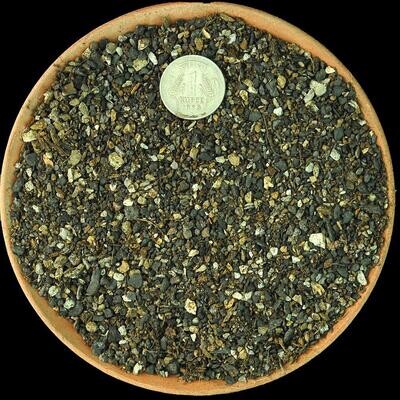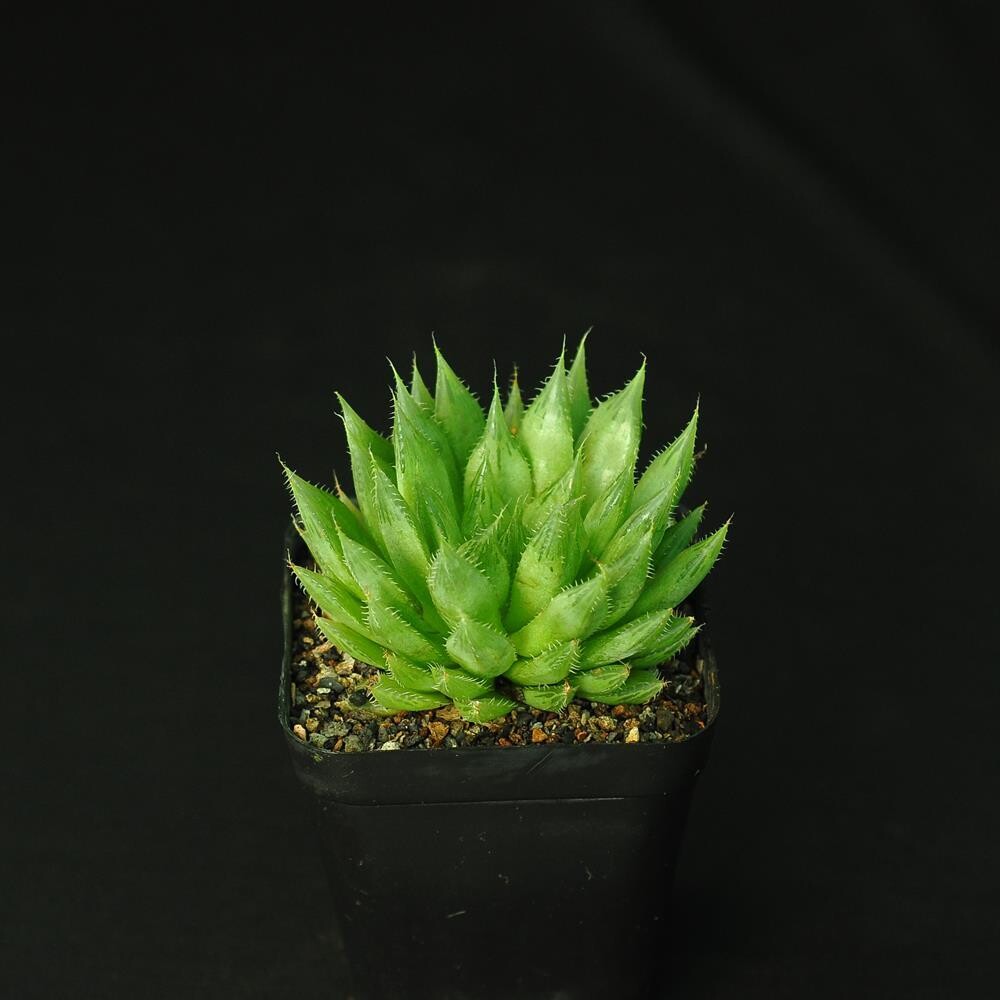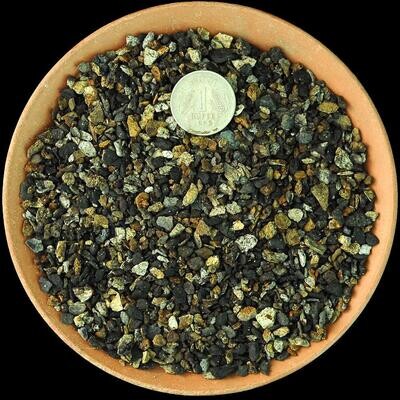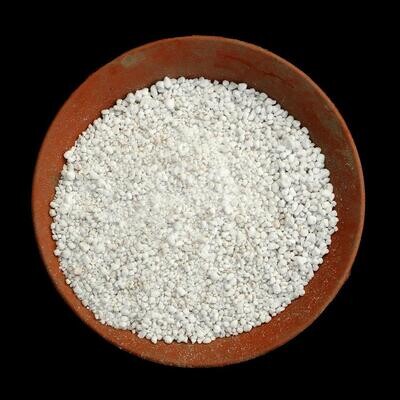Please check the Shipping Updates Page for information on shipping.
Haworthia mucronata (Glassrim Haworthia)
Haworthia mucronata, commonly known as Glassrim Haworthia, gets its specific epithet 'mucronata' from Latin, meaning 'pointed' or 'spiky', a reference to the small pointed tips of its leaves. The common name 'Glassrim' reflects the translucent, almost glass-like appearance of the leaf tips, which is a distinctive feature of this species.
Technical Description of Plant
Haworthia mucronata is a small, rosette-forming succulent, typically reaching about 3-5 inches in height and diameter. The plant forms dense clusters of rosettes over time. Each rosette comprises thick, fleshy, lanceolate leaves that are green to dark green in color. The leaves are adorned with white tubercles and have distinctive translucent tips, giving them a unique, eye-catching appearance. The leaf edges are smooth, and the leaves taper to a fine, sharp point. This species rarely blooms, but when it does, it produces small, inconspicuous white flowers on slender stalks.
Origin of Plant
Haworthia mucronata is native to the Eastern Cape Province of South Africa. It typically grows in rocky outcrops and is adapted to semi-arid climates, often found in the shade of other vegetation or rocks, which provides a clue to its light preferences in cultivation.
Conservation Status
Haworthia mucronata is not listed as an endangered species. However, like many succulents, it can be subject to threats such as habitat loss. Cultivating this plant in nurseries helps to reduce the demand for wild-collected specimens and supports conservation efforts.
Care Instructions
Haworthia mucronata is a low-maintenance succulent that's well-suited for beginners. It prefers bright, indirect light but should be protected from harsh direct sunlight, which can scorch the leaves. Well-draining soil is essential, and the plant should be watered moderately, allowing the soil to dry out completely between waterings. In winter, reduce watering to a minimum. This species is not frost-tolerant and should be kept in a temperate environment. Fertilization is not necessary, but a diluted succulent fertilizer can be applied sparingly during the growing season.





